Sharlyn J. Lauby's Blog, page 28
January 11, 2024
HR: Expect More Employment Law Changes in 2024
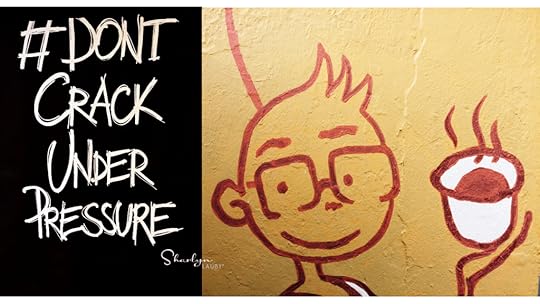
Estimated reading time: 4 minutes
Organizations are seeing increased activity in the area of employment law these days. In 2023, we talked about several labor law poster changes. As well as an increase in union organizing activity. That doesn’t include all the typical compliance matters like anti-harassment training and compensation administration (just to name a few).
It’s important for organizations to maintain compliance. Not only does it help the organization reduce fines for non-compliance but it’s just the right thing to do. And don’t forget the positive impact on the employee experience.
Here are a few articles we published in 2023 as a reminder of the compliance matters organizations should be paying attention to.
Employment Tax Processing: Just Because You Can Doesn’t Mean You Should
We all know that organizations are very focused on efficiency. Truth is, they always have been. But efficiency doesn’t always mean doing everything yourself. This is a great time to explore the options that are available in terms of filing employment taxes. Everyone wants the same thing – to pay our tax obligations on time and pay the right amount. The good news is we don’t have to (and shouldn’t) figure it out all by ourselves.
Fair Labor Standards Act (FLSA) Labor Law Posters
Just in case you missed it, President Biden signed the Consolidated Appropriations Act of 2023 on December 29, 2022. The Act has several components including: Pregnant Workers Fairness Act (PWFA), telehealth benefits, Setting Every Community Up for Retirement Enhancement (SECURE) 2.0 Act, and Providing Urgent Maternal Protections for Nursing Mothers (PUMP) Act. With the PUMP Act, organizations need to update their federal labor law posters.
How to Manage Employment Law Posters
In addition to placing your company at risk of legal fines and penalties, a real breakdown of trust can happen if an employee discovers that the organization isn’t maintaining employment compliance. An employee will start thinking, “If the company didn’t tell me about this, what else haven’t they told me?” Having a process in place for employees to receive the required employment law notices tells employees that the organization cares about doing the right thing.
Employees Are Unable to Identify Sexual Harassment
According to a study from Cornell that showed seven scenarios to workers in industries with high rates of complaints, only 6% were able to correctly identify the seven situations as sexual harassment. Organizations should have a comprehensive compliance strategy that includes more than just an anti-harassment policy. They should have a communications plan in place, so employees know what to do when they have questions and concerns. And they should give employees training so there is no question about what appropriate behaviors are and what to do if they see something that should be reported.
How to Learn More About Labor Relations
When it comes to labor relations, one of the first things that individuals need to know is what legislation governs your industry. For instance, many organizations are governed by the National Labor Relations Act (NLRA). But some industries – like transportation – are governed by the Railway Labor Act. And if you’re in the public sector, the rules are different as well. So, understanding the rules is step one.
Being Proactive is Key When it Comes to Employment Law ComplianceBeing able to take a more proactive approach to compliance can reduce any liability (i.e., fines and penalties) for non-compliance. And it shows everyone that the organization places an emphasis on following the law.
If you’re looking for some resources to stay current when it comes to employment laws, specifically on the topic of pay transparency, attorney Kate Bischoff recently partnered with our friends at UKG on a white paper titled “2024 Employment Law Forecast”. It has great information to review as you’re putting your compliance strategy together. It could also be helpful to distribute this around the office so the operation keeps it top of mind as well.
But it got me thinking. Wouldn’t it be great if we had a way to know about labor law changes sooner? The faster organizations become aware of changes in legislation, the faster they can put a compliance plan in place. Well don’t forget that our friends at HRdirect have introduced a new Employment Law Alert Service. This is an annual subscription service that will keep your organization informed of recent employment law changes on a federal, state, county, and city level.
Compliance is always going to be a part of human resources. And that’s okay. The goal is to stay informed of employment laws, communicate changes, and maintain compliance. There’s no rule that says we have to do these things all by ourselves. We can partner with trusted sources to make our compliance strategy more effective and efficient.
Image captured by Sharlyn Lauby after speaking at the Flora Icelandic HR Management Conference in Reykjavik, Iceland
The post HR: Expect More Employment Law Changes in 2024 appeared first on hr bartender.
January 9, 2024
Employee Learning Improves the Bottom Line – hr bartender
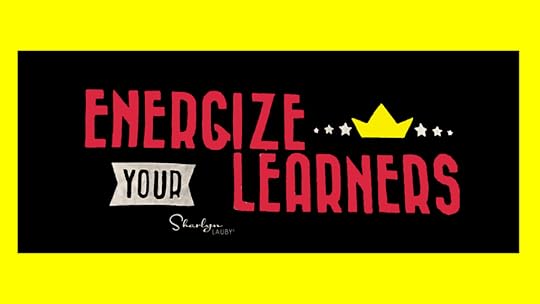
Estimated reading time: 4 minutes
I ran across a statistic recently that – while it’s a bit dated – speaks volumes about the value of employee training programs. According to a study from the Association for Talent Development (ATD), organizations that make investments into learning and development realize 218% higher income per employee and 24% higher profit margins. Those are pretty significant numbers. And even if they dropped a little over time, they’re still significant. Getting 100%+ return on investment (ROI) is noteworthy.
But this means that organizations need to do more than just implement one or two training programs. Training has to become part of the culture. Let me rephrase that … learning must become part of the culture.

I know sometimes the phrase “lifelong learning” gets pushback but there is truth in it. I’m reminded of the Peter Senge’s book “The Fifth Discipline” and how organizations can improve performance when they become learning organizations, meaning that they regularly learn from the successes and not-so-successful moments.
Employee Training Is an Essential Business Activity
Basic employee training – the kind of training that employees need to do their jobs – isn’t a luxury item. If you cut it from the budget, you’ll pay for it somewhere else. If employees don’t feel that the company supports them by providing the training and tools to do the job, they will go somewhere else. Basic employee training isn’t a carrot to dangle in front of someone and say, “I’ll tell you how to do your job if you promise to stay.”
Managers Should Encourage Employee Development
It can be very tempting for organizations to say that “we can’t afford employee development right now” or “if we develop people, they will take jobs with our competition”. Companies that don’t develop their employees will lose those employees because they’re not demonstrating support for an employee’s career. No one is going to stay with a company that says, “We like you. We just don’t want you to be marketable.”
Teach Employees How to Unlearn
Organizations often tell employees “Effective tomorrow, here’s the new procedure.” and not give anyone a chance to unlearn the old procedure. Not only does unlearning create buy-in for the change but it gives employees a chance to practice, which can improve their overall performance. And isn’t that what organizations want – good employee performance? Because good performance = good bottom-line.
Let Employees Learn by Breaking Things at Work
Speaking of learning new things, organizations and individuals need to find ways to be curious. There’s an old saying that the most dangerous six words in business are “We’ve always done it that way.” It’s true. If we want to continue delivering value, we need to be willing to “break things” occasionally.
Team Building and Team Development Are Not the Same Thing
There are advantages and disadvantages to working in teams. In my experience, the number one reason from employees that they either love or hate teamwork is the team dynamic. Set employees up for success by giving them the tools and training.
3 Steps for Employees to Identify Their Own Learning Needs
It makes good business sense for organizations to give employees the methodology and tools to manage their own learning during orientation or onboarding. Employees start their jobs with a clear understanding of their role and expectations with goal setting, one-on-one meetings, and performance management. Meanwhile, managers can spend their time coaching employees to use the process well.
As we move into the new year, there will be a lot of pressure to perform at a high level – both for organizations and for individuals. The best way to accomplish that is through learning. Organizations that make learning a part of their culture and the way they do things, will see positive results.
Image captured by Sharlyn Lauby at the Association for Talent Development Conference in Orlando, FL
The post Employee Learning Improves the Bottom Line – hr bartender appeared first on hr bartender.
January 7, 2024
Workplace Power: The 7 Types and Why They Are Important

Estimated reading time: 4 minutes
I recently spoke on a webcast hosted by the Society for Human Resource Management (SHRM) where I spoke on the topic of leadership and management. I believe it’s important to remember that the two are not the same thing. The functions of management include planning, organizing, staffing, directing, and controlling. Leadership is defined as the ability to influence others. Because the definition of leadership includes influence, it’s important to understand workplace power.
Power is defined as “a person or thing that possesses or exercises authority or influence”. In essence, when we use power, we’re utilizing our influence to get something. This means that everyone has power. Yes, everyone. And that’s not a bad thing. The real question becomes what kind of power a person has and how someone uses that power. Here are the seven most common types of workplace power and how they might be used.
Coercive power is associated with people who are able to punish others. People fear the consequences of not doing what has been asked of them. Coercive power could be used by a manager as in “Do this or I’ll write you up.” But it could also be used by the scheduling department to give someone an unfavorable work shift. Connection power is based upon who you know. This person knows and has the ear of other powerful people within the organization. An example would be the administrative assistant who has a positive working relationship with their boss. If the assistant doesn’t like you…well, that could get passed along to the executive. And vice versa. Expert power comes from a person’s expertise (obviously). This is commonly a person with an acclaimed skill or accomplishment. Don’t assume that expertise always comes in the form of being a vice president or having a Ph.D. An expert could be the person who is able to fix things around the office. A person who has access to valuable or important information possesses informational power. I think of informational workplace power in two ways. First, it’s the person who always seems to be “in the know” about what’s happening in the company. You know who I’m taking about. But also, those individuals who can curate good information in today’s digital world. Legitimate power comes from the position a person holds. This is related to a person’s title and job responsibilities. You might also hear this referred to as positional power. When I was an in-house HR director, I had the ability to request a manual paycheck for an employee. That authority was given to me based on my job title. No one else was able to make that request. People who are well-liked and respected can have referent power. People like to do things with and for people they like. It’s the premise of the best-selling book by Tim Sanders, “The Likeability Factor”. This doesn’t mean being weak or a pushover. It also doesn’t mean that likeable people never deliver tough messages. But it does mean that they invest time in building relationships. Reward power is based upon a person’s ability to bestow rewards. Those rewards might come in the form of job assignments, schedules, pay or benefits. This could be perceived as the opposite of coercive power. Managers might use reward power. For example, “Do this project and then take the rest of the day off.”Please don’t be modest and say to yourself, “I don’t have any power.” As you can see, there are lots of different ways workplace power can manifest itself. And for that reason, it’s important to realize that power exists in everyone. It’s also possible that you have different kinds of power with different groups or situations. The two biggest mistakes I see with people using power revolve around (1) trying to use power they don’t have and (2) using the wrong kind of power to achieve specific results.
To help you better understand and identify your “power”, take a moment and think about how you try to influence the actions of others. You could use the descriptions above as a pseudo self-assessment. Rate yourself on a scale of 1-5 in each of the different kinds of power. With 1 being not at all characteristic of you and 5 being quite characteristic.
This can be a powerful exercise (sorry for the pun). If you’re honest with yourself, I hope you will find the results helpful. Not only for the way that you tend to use power, but in the ways that others use power with you.
Image captured by Sharlyn Lauby while exploring the streets of Orlando, FL
The post Workplace Power: The 7 Types and Why They Are Important appeared first on hr bartender.
January 2, 2024
77% of Companies Struggle to Fill Jobs so Start with a Solid Recruiting Strategy
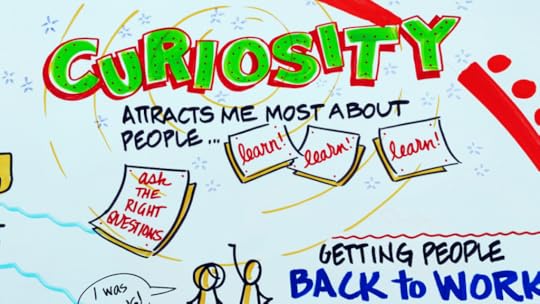
Estimated reading time: 5 minutes
It might sound like we have this conversation every year, but recruiting is going to be tough in 2024. In fact, for some employers, it might already be a significant challenge. I saw an article on LinkedIn saying that 77% of companies said they struggled to fill open jobs in 2023.
The same article mentioned that 53% of employees are likely to leave their current employer in the upcoming year. It reminded me of a new term that’s making the news called “job cuffing”. Like the term “ghosting”, job cuffing originated in dating and relationships. The idea behind cuffing is that you have someone to hang out with during the winter months when there are lots of festive events and parties. Because you don’t want to go to those events solo. Then after the New Year … the relationship will be over.
Now the concept of job cuffing is making its way to the workplace. You hang out with your current employer until the holidays pass and then it’s time to find a new opportunity.
Even if organizations don’t believe they’re subject to job cuffing, they should recognize that turnover happens. People find new jobs, retire, or opt to stay home and care for family. Bottom line, recruiting will continue to be a challenge.
I wanted to share with you some of the recruiting related articles we published during the year, because I think they reflect things we need to review and consider in our recruiting strategy. The articles are organized by topics to consider before, during, and after the interview.
BEFORE THE INTERVIEW
How to Conduct a Job Analysis – A job analysis is about figuring out how the work is getting done in the organization and determine if it is assigned to the right job title. Organizations can take the information and possibly shift some responsibilities for greater effectiveness and efficiency.
The 4 Key Elements of An Effective Recruiting Strategy – The workforce is changing. HR and talent acquisition professionals need to be prepared for a strategic response.
4 Reasons for Organizations to Consider Second Chance Employment – A growing number of organizations are developing second chance employment programs. Because it’s the right thing to do. And it makes good business sense. When you can do both, it’s a win for all.
The Pros and Cons of Using Ghost Jobs in Your Recruiting Strategy – Organizations need to examine the rewards and risks to determine whether a ghost job strategy really works for them. The question becomes are they effective? They might have been at one point in time. Then, the question is are they still effective today? And do the rewards outweigh the potential downsides? That I’m not so sure about.
DURING THE INTERVIEW
Cover Letters Need a Purpose to Be Useful – This article isn’t designed to sell anyone on writing (or not writing) cover letters. if you’re a candidate using cover letters then make them good ones. Don’t just rehash your resume in a letter format. And if you’re a recruiter evaluating a candidate based on their cover letter, have solid criteria for doing so.
Use CARL as a Behavioral Interview Alternative to the STAR Method – Regardless of what’s happening in the labor market, organizations will need to find and hire the best employees. That requires a solid recruiting strategy and asking good interview questions. You can use STAR and CARL to design interview questions that will allow the candidate to showcase their experiences.
Make Interview Questions Relevant to the Job – The purpose of today’s article isn’t to say don’t get to know the people you work with. Because work is better when we have positive working relationships with the people around us. But maybe we need to become more cognizant of how we go about building those work relationships.
AFTER THE INTERVIEW
Non-compete Agreements Should Not Be a Retention Strategy – The U.S. Federal Trade Commission (FTC) has recently introduced a proposal to ban non-compete agreements. It’s still in the proposal stage, so there haven’t been any final rulings, but this has huge potential for the workplace. If you’d like to read what’s in the proposal, check out the Fact Sheet on the FTC website.
E-Verify: What Organizations Need to Know – If the company hasn’t adopted E-Verify as part of a good recruiting strategy, now is the time to have a conversation. Services like E-Verify are designed to protect employers and employees. Employers know that they’re hiring someone who is authorized to work. And employees know that the organization is following the law by hiring individuals who are authorized to work.
Workplace Inclusion: Organizations Must Choose to Take Action – According to a LinkedIn study, 76% of candidates and employees say that diversity is important when considering job offers and 80% said that they want to work for an organization that values DE&I (diversity, equity, and inclusion). There are also several studies that show how companies that place an emphasis on DE&I outperform their competition. However, these outcomes are predicated on organizations not simply talking about diversity, equity, and inclusion but also doing something about it.
Organizations: Your Social and Political Views are Part of Your Brand – As we’re starting to talk about the 2024 U.S. election cycle, this could be a good time for the organization to have an intentional conversation about their views. Because the organization’s social and political views are a part of their brand. Even if the company’s view is “We’re not going to comment on social and political matters.”, that becomes part of your brand. Because in today’s business environment, “no comment” is not a neutral statement.
In my work experience, I found that when the recruiting process wasn’t optimized, it became the target of the organization’s problems. Meaning that when recruiting is broken, hiring managers will use that as the excuse for not getting things done.
“We don’t have enough employees.”
“We don’t have enough qualified applicants.”
“HR isn’t getting us candidates in time.”
…and the list goes on.
We don’t want to be in that position. The organization doesn’t want to be in that position. Now is a great time to review your recruiting strategy and make sure it can deliver.
Image captured by Sharlyn Lauby at the SHRM Annual Conference in Orlando, FL
The post 77% of Companies Struggle to Fill Jobs so Start with a Solid Recruiting Strategy appeared first on hr bartender.
December 26, 2023
HR Professionals Need to Enter the Artificial Intelligence Conversation
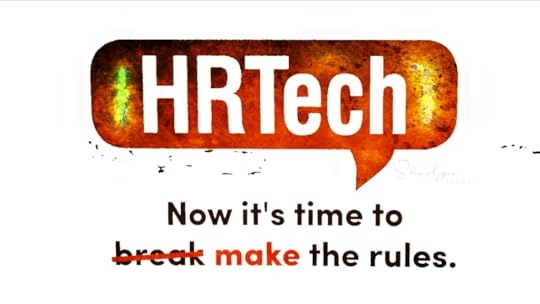
Estimated reading time: 4 minutes
I learned a new term recently – p(doom). It stands for the “probability of doom” when it comes to artificial intelligence (AI) and a doomsday scenario. P(doom) is a scale that runs from 0 to 100. The higher you score yourself, the more convinced you are that AI is going to wipe out civilization.
I first read about p(doom) in The New York Times newsletter DealBook where it reported that sharing your p(doom) score is becoming more mainstream and some people are even making it a part of their introduction. “Hi! I’m Sharlyn Lauby, author of HR Bartender. And my p(doom) score is XX.”
Personally, I don’t have a p(doom) score at this point. But it did make me realize that I need to think about it. Not because I need a p(doom) score to share with everyone. But because – as a HR pro – I can’t influence artificial intelligence if I don’t become part of the conversation.
Organizations are talking about AI regularly and HR technology companies are adding AI components to their products. Translation: The technology conversation right now is all about AI. HR professionals cannot wait to enter this conversation. They need to be a part of shaping outcomes. Because artificial intelligence can play a prominent role in talent strategies.
Artificial Intelligence and the Candidate Experience
Organizations have to think about the candidate experience and how people perceive technologies like artificial intelligence. If applicants are suspect of the organization’s talent acquisition process, they could be reluctant to apply. And that has a negative impact on the company’s goal to hire the best employees.
Artificial Intelligence Can Empower Your Employees
Artificial Intelligence isn’t going away, in fact, I think we will continue to have more conversations about its capabilities. There are benefits to organizations and individuals in reducing administrative work. But organizations should put some dedicated thought and planning into the role that AI will play in their operation.

If human resources departments want to use artificial intelligence to attract, hire, engage, and retain talent, then they need to ensure that AI is a part of the organization’s technology strategies.
Organizations Need to Have a Comprehensive Technology Strategy
Today’s technologies are an important part of doing business. And because technology is such a huge component of our personal and professional lives, we need to make sure everyone knows how to properly use it. It starts with understanding the organization’s technology strategy.
Organizations Need an Artificial Intelligence Strategy
An increasing number of candidates and employees are coming to expect modern technology in their work experience. Old technology can be an obstacle to productivity, talent management, and recruiting. Organizations don’t have to be early adopters of every new technology, but they should understand the trends and strategize about what it means for their operation.
Once organizations have a solid technology strategy in place, that includes new tools like artificial intelligence, then it’s time to think about how it will be implemented throughout the organization. User adoption is key, and employees will need education to embrace AI.
5 Steps to Become an Effective Adopter
Individuals and organizations need to figure out how to become “effective adopters”. Not everyone has to be an early adopter, but you certainly don’t want to be so late to the party that you can’t catch up.
How to Find the Right Artificial Intelligence Tool for HR
While we’ve been talking about artificial intelligence for a while, it’s still a new tool. But we’re getting to the point where the talk is turning into reality. That’s really exciting. But we need to prepare for it.
Technologies evolve over time and artificial intelligence will be no exception. But for organizations and HR departments that have been on the sidelines wondering when to join in the conversation … I think that time is now. You will want to have a say in how this technology evolves. Because that benefits your business and your employees.
Image captured by Sharlyn Lauby at the HR Technology Conference in Las Vegas, NV
The post HR Professionals Need to Enter the Artificial Intelligence Conversation appeared first on hr bartender.
December 19, 2023
Work On Your Personal Brand In 2024

Estimated reading time: 4 minutes
I mentioned a few months ago that I received a trial membership to MasterClass as part of changing my cellular phone plan. During the trial, I was able to listen to Neil Gaiman, Malala Yousafzai, Neil deGrasse Tyson, RuPaul, Bill Nye, and Dr. Terence Tao. And while I didn’t plan it this way, the last session I listened to about determining a personal brand really brought them all together.
Roxanne Gay is a writer and podcaster. She is the author of the bestseller “Bad Feminist” and an opinion writer for The New York Times. She is also the author of “World of Wakanda” for Marvel. While Roxanne’s MasterClass was focused on writing for social change, what I walked away with was more about being your unapologetically authentic self in both your personal and professional lives.
It reminded me of an interview I did a long time ago with Amanda Hite and Dan Schawbel about personal branding. We all have a brand, and we need to be comfortable with it. And if we’re not, it could be valuable to do some self-reflection. Roxanne Gay’s MasterClass talked about six areas that might be helpful to consider as part of a self-reflection exercise.
Make appointments with yourself for the things that matter. I wanted to share this takeaway first because I think it sets the stage for the others. You can call it self-care or me time or whatever. It’s okay to block time off on your calendar for you. Because you are worth it. Identify what’s important to you and make time for it.
Have a personal code of ethics. In season three of The HR Bartender Show, we talked about ethics mostly in the context of organizational ethics. It’s a good reminder that our personal ethics are important. Many people use the New Year as an opportunity for self-reflection. Maybe it makes sense to add time to think about personal ethics and how it relates to your organization’s ethical standard and personal brand.
Read and listen to diverse sources. This kinda relates to the first two takeaways. One of the activities that can help us identify what matters is reading and listening to a diverse selection of people. Please note: I did not say that you have to believe or embrace every word they say. I must admit that sometimes the people who frustrate me the most are often ones that help me learn something. There is value in leaving the echo chamber.
Learn how to research. The definition of research is “the creative and systematic work undertaken to increase the stock of knowledge”. It builds on the last takeaway about diverse sources. When I read and listen to things, I often do research to confirm that they are true. Several of the MasterClass sessions I’ve listen to mentioned misinformation and disinformation. We need to learn how to research and identify knowledgeable sources to figure out the truth.
Find your process. One of my most popular training programs is related to the concept of self-management. In the session, we talk about identifying what makes you productive. If you haven’t asked yourself the question lately, I’d suggest you ask “What makes me my most productive self?” Conversely, also ask, “What makes me my least productive self?” Be prepared to discuss this with your manager and maybe even your family.
Support your community when you can. I would like to add to this takeaway “with what you can”. It’s not always possible to support our community all the time. Sometimes other things must take priority. But when you can show support for your community – do it. And do it a level that you’re comfortable and capable of.
Roxanne Gay’s MasterClass was a great reminder that one of the keys to our success is self-awareness. If we want to change or improve an area of our lives, it starts with evaluating where we are right now and where we’d like to be in the future. The world we live in is full of information. Sometimes conflicting information. Knowing ourselves and what we stand for becomes essential in figuring out our personal brand.
Image captured by Sharlyn Lauby after speaking at the SHRM Annual Conference in Las Vegas, NV
The post Work On Your Personal Brand In 2024 appeared first on hr bartender.
December 17, 2023
Employee Pay Should Be Equitable and In Compliance With the Law
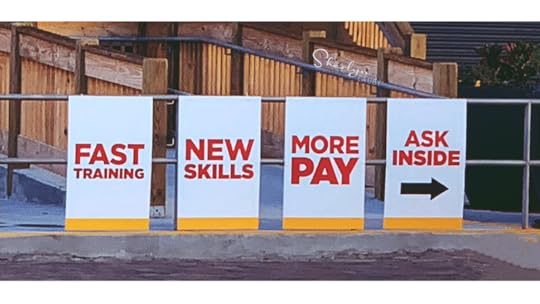
Estimated reading time: 5 minutes
The title of today’s article might seem a bit obvious. But it’s not intended to say that organizations are intentionally trying to get away with something when it comes to employee compensation and benefits. The title of today’s article is a reminder that when it comes to employee pay, there’s a lot of information to keep track of. And it’s changing all the time.
I wanted to do a roundup of the articles we’ve published this year that reference employee pay, specifically focused on making sure that employees are paid equitably and in compliance with federal, state, and local laws.
Just a reminder, in Season 2 of the HR Bartender Podcast, I chatted with Brian Reaves, UKG’s executive vice president and chief belonging, diversity, and equity officer about a research report from UKG and Harvard Business Review on pay equity. I hope you’ll check it out when you have a moment.
There Is More to Equity Than Just Pay Equity
It’s time for organizations to realize that pay equity isn’t the only equity we need to be addressing. The Centers for Disease Control (CDC) define health equity as the state in which “every person has a fair and just opportunity to attain their highest level of health”. Some of the reasons that we’re not seeing progress with health equity involve other inequities like to education, employment, food, social relationships, etc. It’s a complex topic that involves many other factors and deserves our attention.
Employers: Pay Transparency Might Apply to Your Current Employees
I’d like to think that most organizations know about the wave of pay transparency laws that are being enacted around the United States. But I read an article in the Foley & Lardner LLP newsletter that caught my attention. It was about pay transparency laws applying to current employees. It’s important for employees – at every level – to understand how pay works. And a big part of that is knowing what the pay range is for the job. And frankly, employers should want employees to understand their compensation as part of financial wellbeing.
Everything Organizations Should Know About the Work Opportunity Tax Credit (WOTC)
First created by Congress in 1996, the WOTC is a federal tax credit available to employers who invest in American job seekers who have consistently faced barriers to employment. The targeted groups include qualified veterans, ex-felons, qualified Supplemental Nutrition Assistance Program (SNAP) benefit recipients, qualified Supplemental Security Income (SSI) recipients, and qualified long-term unemployed just to name a few.
I wanted to mention this article about the WOTC today because employers can receive a tax credit of up to $9,600 per qualified new hire, which is equal to 40% of the new hire’s qualified wages, provided the new hire works at least 400 hours during their first year of employment. The Work Opportunity Tax Credit can help talented people get jobs and provide organizations a tax credit for doing it.
Wage Garnishments: Manage Them Effectively, Efficiently and With Empathy
Organizations are very focused on being effective and efficient. This is a common conversation when it comes to technology and compliance. Let the technology do what it does best, and HR will focus on what it does best. This same philosophy applies to wage garnishments. Find a solution that does garnishments well so HR can spend their time focused on the employee experience.
Wage garnishments happen more than we might think. In the white paper “The U.S. Wage Garnishment Landscape: Through the Lens of the Employer”, they report that 1 in 14 employees is subject to some form of wage garnishment. The most common type of garnishment is related to child support (50% +) with tax levies being second (19%). The report indicates that the highest number of garnishments are employees between the ages of 35 and 54. This group also has the highest wage garnishment rate. And approximately one in one hundred people have more than one garnishment.
Fiduciary Responsibilities Under Employee Retirement Plans
Employee benefits, including retirement benefits, are both important and complex. If you’re not aware, organizations and HR departments have what’s called a “fiduciary responsibility” when it comes to employee retirement plans. We often tell employees that their benefits package is a part of total compensation, which is true. But that also means we need to get it right. No one likes having their pay messed with.
If you’re saying to yourself, “This is great information. We definitely need to stay on top of our obligations and do the right thing for our employees. But where should we start?!” It’s a great question. The answer might be to conduct an internal audit.
It Is Time to Schedule a Minimum Wage Audit – 3 Important Steps
In the United States, the federal minimum wage is $7.25/hour. It’s been that since July 2009. However, there have recently been a TON of changes to the minimum wage on a state and local level. Minimum wage laws are changing regularly. Dare I say frequently.
The last thing any company wants is to be considered “out of touch” because they don’t know what the current minimum wage is for employees. Beyond appearing to be clueless, companies can’t afford to risk the potential wage and hour or Fair Labor Standards Act (FLSA) lawsuits from their employees.
As we’re getting ready for the new year, this is a perfect time to do an audit, get reliable information about compensation compliance, and put a plan in place. Organizations do not want to make mistakes when it comes to employee pay and benefits.
Image captured by Sharlyn Lauby while exploring the streets of Fort Lauderdale, FL
The post Employee Pay Should Be Equitable and In Compliance With the Law appeared first on hr bartender.
December 14, 2023
Career Management Involves Both the Manager and the Employee

Estimated reading time: 4 minutes
As we approach the New Year, the topic of careers is often on everyone’s mind. From an organizational perspective, management is thinking about their staffing plans and where they are going to fill positions. Will we have to hire people from the outside? Or do we have internal talent that are ready to take on new roles?
Meanwhile, employees are thinking about their careers. What do I want to focus on in the year ahead – improving skills, building relationships, or maybe identifying new opportunities? Those things don’t happen overnight, and employees have to plan how they will accomplish their goals.
Ideally, both the organization and the employee are working together on career management. This allows the organization to accomplish its goal of finding and retaining the best talent. And it allows employees to accomplish their goals of finding rewarding work.
This year, we’ve published several articles talking about both the organization’s and the employee’s roles in career management.
Career Planning: The Organization’s Role in Creating Employee Success
Career planning is the process of matching an employee’s career goals with their capabilities. Simply put, it’s about connecting what people do well with what they want to do. Ideally, we want employees to enjoy their chosen career. If they do, it can translate to higher employee engagement, which ultimately has a positive impact on productivity and the bottom line.
Servant Leadership: Excellent Leaders Focus on People and Profits
There is no clear path to being a good leader. If there was, we’d all have an index card with the steps to be a good leader and the conversation would be over. Leadership takes time and practice. But if there was one thing that we could all focus on to improve our leadership skills, maybe first serving the people around us is a good place to start.
Should Managers Be Coaches or Is There a Better Option
What if the organization said, “Asking managers to manage and be coaches is too much. Let’s hire some coaches to supplement what the manager is doing.” Remember the functions of management include planning, organizing, staffing, leading, and controlling. It is very possible that managers just have too much on their plate. And to do employee coaching well, the organization might want to consider having dedicated coaches.
Encourage Employees to Manage Their Career
While organizations need to encourage employees to manage their career, employees also need to take an active role in their careers. They need to learn how to evaluate their own performance and identify things they want to learn. Then they should set goals for themselves and monitor their progress.
Career Planning: The Employee’s Role in Driving Their Success
Employees are an equal partner in their own career planning. Remember the definition of career planning is “the process of matching career goals with capabilities”. That can’t happen without employee involvement. Then it becomes the employee’s responsibility to communicate those goals to management. Ultimately, that’s how managers can support the employee and their future plans.
Deciding to have a mentor(s) is a great thing. But it takes some planning. Decide what you’re hoping to accomplish. Think about who might be able to help and determine their qualifications. Be prepared to talk about these things when you ask someone to take on a mentoring role. Oh, and consider whether your mentoring relationship needs to be in-person or could it be virtual. This could impact who you ask to be a mentor.
5 Qualities Found in Excellent Mentors
According to the site MentorCliq, 92% of all U.S. Fortune 500 companies and 100% of the top 50 U.S. Fortune 500 companies have mentoring programs . Mentoring is an incredibly popular activity because it works. It feels great to share your experience and knowledge with others, and you can also learn a lot along the way. But that will only happen if the mentoring relationship is built on the right foundation. That’s why it’s worth the time to learn how to do it well.
While we’re not talking about quiet quitting and loud leaving anymore (thank goodness!), this doesn’t mean that employees are completely content in their careers. Employees want to know that the organization values them and will make investments in their career success. In an article on the American Psychological Association site, 91% of respondents said it’s important to have a job where they can consistently learn. But only 47% say their employer offers that.
As organizations and individuals are setting goals for the year, discuss where career management falls in those goals. Put a plan in place. Allocate resources to make it happen. Not only will it make employees more engaged, but it will help the business thrive.
Image captured by Sharlyn Lauby while exploring the streets of Washington, DC
The post Career Management Involves Both the Manager and the Employee appeared first on hr bartender.
December 12, 2023
Artificial Intelligence: What HR Pros Can Do to Prepare For the Future
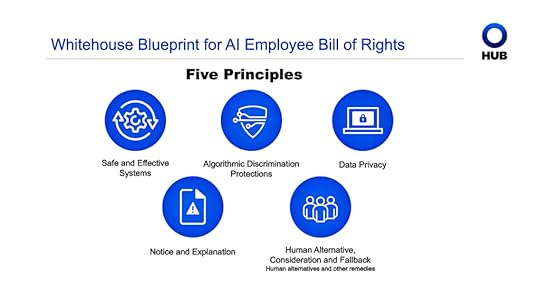
Estimated reading time: 8 minutes
Not a day goes by without some news about artificial intelligence (AI). The latest being the ouster – and return – of OpenAI CEO Sam Altman. The world of AI is exciting, dynamic, and full of potential. Just like human resources. Artificial intelligence is changing our jobs and the HR function.
Regardless of where you and your organization are regarding AI adoption, it’s important to stay on top of the latest developments. That’s why I asked my friend Carrie Cherveny, chief compliance officer and senior vice president of strategic solutions at HUB International to share her insights with us today. In her role, Carrie works with clients to develop strategies that ensure compliance and risk mitigation when it comes to benefits and employment practices.
Carrie, thanks for being here. Why should human resources professionals embrace artificial intelligence (AI)?
[Cherveny] AI can be used to automate many of the more arduous or mundane processes. That will free up HR to have more meaningful and impactful employee interactions. Let’s replace the hours of work that don’t move the needle with hours of work that can truly improve employee retention and workplace culture.
Automate mundane and repetitive tasksData reporting and analysis – dashboards and data summaries – in today’s data driven environment, pivot tables and Excel tools may fall short. Use AI to pare down large volumes of data, such as executive reports and dashboards.Build visually pleasing presentations Conduct research – using AI as part of a multi-pronged research project can improve efficiency and reduce research time – however, remember that you should always validate any of your Artificial Intelligence research results (see cautionary tale here).Respond to simple employee inquiries – AI can be a great tool to get you started, whether drafting a response to an employee inquiry or composing a speech or a presentation.As part of our interview, I asked ChatGPT “How can AI help human resources professionals do their jobs?”. Here are some excerpts from its answer:
Recruitment and Talent Acquisition:
Resume Screening : AI can automate the initial screening of resumes, saving time and ensuring a more objective process. Candidate Matching : AI algorithms can analyze candidate profiles and match them to job requirements, improving the accuracy of shortlisting. Chatbots for Initial Interaction : AI-powered chatbots can engage with candidates, answer FAQs, and collect basic information, streamlining the initial stages of the recruitment process.Employee Engagement:
Pulse Surveys and Feedback Analysis : AI tools can analyze employee feedback from surveys, performance reviews, and other sources to provide insights into engagement levels and areas for improvement. Personalized Learning and Development : AI can recommend personalized training and development plans based on employees’ skills, performance, and career goals.Employee Relations:
Chatbots for HR Support : AI-powered chatbots can handle routine HR queries, allowing HR professionals to focus on more complex and strategic issues. Sentiment Analysis : AI can analyze communication channels to gauge employee sentiment, helping HR address potential issues before they escalate.It’s important to note that while AI can greatly enhance HR processes, it should be used as a tool to support human decision-making rather than replacing human judgment entirely. Additionally, ethical considerations, transparency, and data privacy should be prioritized when implementing AI in HR.
Artificial Intelligence can be useful and helpful, when used appropriately.
Should HR pros be concerned about AI replacing them? Why or why not?

[Cherveny] AI can never replace our critical and dynamic thinking, professional judgment, and consulting acumen. However, AI is here to stay. HR should embrace its functionality while still monitoring and modifying any outputs generated by technology. While it may enhance efficiency and productivity, it will never replace the important service HR provides their organizations.
Maintaining a balance between leveraging technology and maintaining human connections is key to delivering exceptional employee relations experiences. In fact, the U.S. Department of Labor (USDOL) is likewise concerned about displaced workers as a result of AI. In its Executive Order, the White House has instructed the USDOL to develop a plan for how federal agencies can prevent unnecessary job elimination or displacement and assist workers whose jobs are eliminated or disrupted by AI.
Moreover, many of our federal laws implicitly require the involvement of people. For example, AI can never replace the interactive process required under the Americans with Disabilities Act (ADA). Human resource pros must engage in a collaborative and interactive conversation with an employee seeking a workplace accommodation. HR pros must assess the employee’s position and his/her medical limitations to identify a reasonable accommodation (if any). Likewise, Artificial Intelligence cannot replace a human being when interviewing a candidate that may have a speech impediment or accent that may skew an AI-based interview. Keeping the ‘human’ in HR is essential.
The Equal Employment Opportunity Commission (EEOC) has provided robust guidance along with examples of the role HR must continue to play in the employment relationship. For example, a prospective employer may utilize an AI based applicant screening program in a gaming environment – an otherwise qualified applicant whose generation is not familiar with this environment may perform poorly. The prospective employer should have a checks and balance or audit system in place to ensure that the otherwise qualified candidates were not screened out by the AI because they performed poorly based on their age (i.e. disparate impact and age discrimination).
AI should never go unchecked. Individuals utilizing AI must consistently perform oversight, review, and audit AI output. Individuals must ensure that the AI output is accurate, reliable, and nondiscriminatory. Embracing AI also requires continuous training, education, and upskilling. As HR pros we should invest in developing our understanding of AI technologies, their applications, and their impact on our field. This enables us to leverage AI effectively, adapt to emerging trends, and remain competitive in the evolving consulting landscape.
HR should always be transparent when using AI. It’s important to be sure that the HR ‘customer’ (whether employee or job applicant) knows when AI technology is being used and how to get to a live human. For example, if a candidate requires an accommodation for an interview, they should have ready access to a member of HR to request that accommodation.
Interestingly even the ChatGPT answer warns that HR should not rely solely on the AI results and must be sure to check and balance the results. It also likewise warns that HR should be transparent when using AI.
You mentioned the relationship between HR, compliance, and Artificial Intelligence. Do you see AI becoming “regulated”, meaning that HR pros will need to ensure that organizations are compliant using AI? And if so, what aspects of HR might be subject to AI compliance?
[Cherveny] The government involvement has begun! For example, the White House has issued the “Blueprint for AI Bill of Rights” (see graphic above).
The White House has also recently issued an executive order requiring government agencies to address the limitations and controls around the use of AI. The executive order creates new government offices and task forces, requiring each federal agency to appoint a Chief AI Officer and help staff a new White House AI Council. The federal government is especially concerned about AI infringing on workers’ rights and discrimination. Likewise, data and cyber security are important considerations when it comes to AI. The government is especially concerned about the nature of the data loaded into an AI platform and the cyber and data security in place to protect that information. HR should be prepared to include these questions in any technology due diligence it performs.
Each federal agency charged with overseeing employer-employee relationships has issued various forms of guidance and caution regarding the use of AI in the workplace:
U.S. National Labor Relations Board issued a general counsel memo regarding the use of AI for employee surveillance.U.S. Department of Labor is holding ‘think tanks’, providing thoughts and guidance in its blogs regarding the use of AI in the workplace along with an ADA AI Toolkit. U.S. Equal Employment Opportunity Commission is providing robust and detailed guidance regarding Title VII, discrimination, disparate impact, and ADA.Last question. For organizations that are still new to using AI, where’s a good place for them to start?
[Cherveny] For organizations interested in implementing AI technology in human resources it first becomes important to understand the guardrails. Becoming familiar and well versed in the federal agency guidance is your first order of business. Understanding where, when, and under what circumstances AI may be appropriate, and more importantly, inappropriate, is an imperative initial measure to take.

From there, HR pros should learn the technology landscape. Becoming acquainted with the AI and technology capabilities of HRIS and other relates systems is essential to understanding how AI may be helpful in their organization. Understanding the technology capabilities will help HR pros better understand how they can automate some of their most mundane and rudimentary tasks.
Once HR has chosen their AI technology programs, they must set up a checks and balance or audit system. For example, validating the candidate screening results of a chatbot AI initial interview. HR should be sure that the AI recommended candidates are in fact, the most qualified of the applicants. For example, did the AI filter out candidates who had language or grammar issues because English is a second language, and those skills are not essential for the position?
As always, a want to extend a huge thanks to Carrie for sharing her knowledge with us. If you want to learn more about the connection between HR and AI, check out HUB’s recent webinar on “Humanizing HR in the Age of AI”.
Carrie is spot on when she says, “AI is here to stay.” As HR professionals, we need to learn about AI’s capabilities, both from a standpoint of where it can enhance and bring value to our work as well as those actions that might detract from our goals. That’s why staying on top of what’s happening is so important. Because we need to prepare for a future that includes artificial intelligence. And that means we need to have an opinion about it.
The post Artificial Intelligence: What HR Pros Can Do to Prepare For the Future appeared first on hr bartender.
December 10, 2023
Organizations: The Employee Experience Starts with Belonging
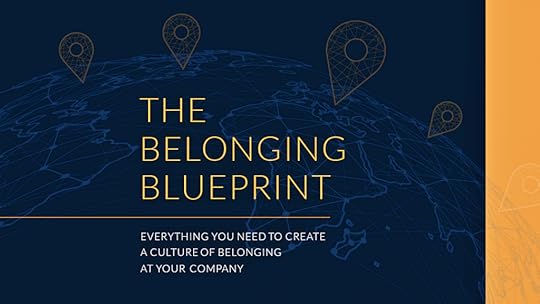
Estimated reading time: 5 minutes
(Editor’s Note: Today’s article is brought to you by our friends at Achievers, the industry leading employee experience platform . They were recently awarded first place by HRO Today for their customer satisfaction ratings . Congrats to them and enjoy the article!)
As an HR professional, I’m sure I’m not alone in reading the 2024 workplace predictions that come out this time of year. I always like to see if the predictions confirm what I’m seeing in the business world. And for 2024, I’m noticing some common themes.
Performance and productivity will remain a primary focus.HR Technologies, specifically artificial intelligence, will continue to evolve.Wellbeing programs will be a key differentiator for organizations.And diversity, equity, inclusion, and belonging (DEIB) will remain a priority. Which is what I want to talk about today. Specifically, belonging.
I recently got my hands on the Achievers report “The Belonging Blueprint” which talks about everything organizations need to create a culture of belonging. One of the pieces of the report that immediately grabbed my attention was the welcome from Kumari Williams, vice president of belonging and diversity at Workday. I really liked the way that Williams explained how belonging plays a role in the employee experience, performance, and wellbeing.
Belonging is a fundamental human need that plays a crucial role in shaping our overall wellbeing and satisfaction, both in personal and professional contexts. When individuals feel a sense of belonging within their workplace, they are more likely to be happier, healthier, and more productive. Moreover, they tend to stay with the company for longer periods, contributing to increased stability and continuity within the organization.
– Kumari Williams
I continue to hear that one of the reasons that DEIB efforts fail is because organizations spend too much time talking and not enough time doing. I also hear that organizational efforts fail because they are too focused on the “D” (diversity) and not enough on the “B” (belonging). The latest research from Achievers supports that anecdotal feedback.
26% of employees have a strong sense of belonging,43% have a moderate sense, and31% have a low sense of workplace belonging.Couple these research findings with Williams’ comments about belonging shaping job satisfaction and it makes an instant and important connection. Organizations with a strong sense of belonging will have better employee experiences, better performance and outcomes, and better employee retention.
5 Pillars of Workplace BelongingI will admit that building a culture of belonging can be hard. Even if the definition of belonging is easy. Achievers defines it as “an experience of connection, security, and community – feeling at home in one’s place, without reservation”. I like to say that belonging means being able to bring your whole authentic self to work.
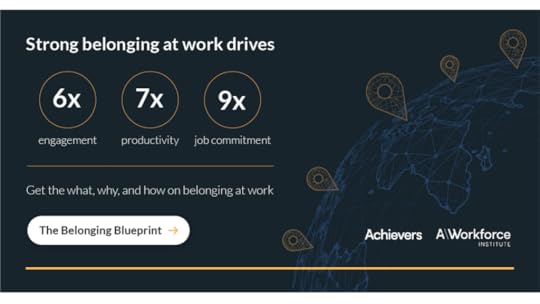
In their report, Achievers introduces a Belonging Model with five pillars – welcomed, known, included, supported, and connected. Here’s a brief description of each pillar.
WELCOMED is focused on integrating employees into the organization. This applies to new employees as well as people who are taking on a new role within the same company. Organizations should have structured onboarding programs for new hires and internal mobility.
KNOWN means that employees are recognized as themselves. This doesn’t have to be intrusive about someone’s personal life. One of the first things I think of when it comes to getting to know someone is understanding how they like to work. It reminds me of the concept of a personal user manual. Managers need to learn how employees like to work and be productive. Employees need to learn how their manager likes to work so they can effectively “manage up”.
INCLUDED is exactly that … a person feels that they are included to participate. I recently wrote about the SMARTIE model, which is a variation of the SMART model adding an “I” for inclusion and “E” for equitable. When the organization is making decisions, they need to have the right people in the room.
SUPPORTED is focused on giving employees the support they need to be successful. This includes tools, training, teamwork, and management support. If organizations want employees to do their best work – and we all know they do – then they need to set employees up for success. Not just when they’re a new hire, but all along the employee experience.
CONNECTED means that employees are able to build and maintain relationships across the organization. This doesn’t mean that employees have to be besties with everyone. It does mean that employees should feel comfortable interacting with others in the company in terms of feeling psychologically safe to have conversations and share feedback.

One of the things that I liked in reading the research and learning about the five pillars is how Achievers provided a roadmap to focus on belonging. Because while belonging sounds easy to talk about, it can be challenging to bring it into an existing organizational culture.
Employees Stay Where They Feel They BelongToday, I’ve only shared a high-level overview of The Belonging Blueprint report. If you want to learn more, and I hope you do … you can download the full report on the Achievers’ website.
And, Kumari Williams will be chatting with Dr. Natalie Baumgartner, chief workforce scientist at Achievers on Wednesday, December 13, 2024 / 2p Eastern about the report and how organizations can improve belonging in the workplace. I realize the webinar is late notice, so if you’re already booked, sign up anyway to get the recording.
Creating a strong sense of belonging will give your employees better experiences, better performance and outcomes, and better employee retention. Organizations can bring a diverse group of employees together, but if they don’t make that group feel like they belong, then employees will leave. I know this sounds obvious, but I’ll say it anyway. People don’t want to stay where they don’t feel that they belong.
The post Organizations: The Employee Experience Starts with Belonging appeared first on hr bartender.
Sharlyn J. Lauby's Blog
- Sharlyn J. Lauby's profile
- 10 followers



